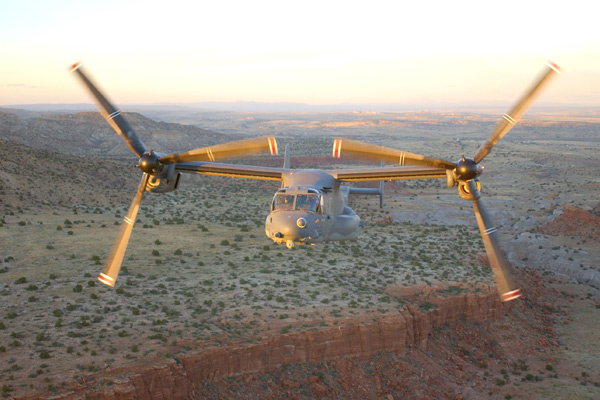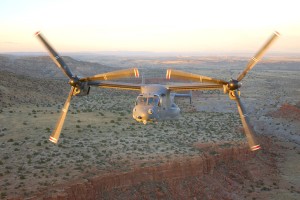DOT&E Report: V-22 Osprey

The Pentagon has released its FY2011 Director, Operational Test and Evaluation Report to the public this week, summarizing the state of the military’s developmental projects, including those being tested at Naval Air Station Patuxent River.
The V-22 Osprey program is a favorite whipping boy of both the media and the Pentagon’s testing team, but, for the past two years, Marine aviators and testers here at Pax River have insisted that they love their tilt-rotor. They praise the finicky machine’s cargo capacity and lifting power, and they want more of them, despite their sharply rising maintenance costs.
This year, the Pentagon’s DOT&E office marked the progress the Osprey has made in the last year, noting that a major software upgrade has made it more agile and the addition of a tail gun has now made it lethal.
The software upgrade drew the closest thing to praise one finds in the sober DOT&E report: “The new software version B4.01 performed largely as expected, thus maintaining all the previous capabilities of the MV-22 aircraft fleet. Software enhancements were modest, but provide meaningful new piloting options and power margins, thus increasing safety and reducing pilot workload.”
The new software offered both new information management tools for weather and defense as well as giving the aircraft a takeoff power boost, more stable hovering and additional payload weight.
The V-22 also got its first taste of battle this year, offering testers a real-world sample of how well the aircraft’s new rear-door .50 caliber machine gun operates.
“The [gun] worked as designed, but has a limited field of fire during aircraft approach to landing,” the report noted.
“Employment of the [gun] requires extensive verbal coordination between copilot and gunner to confirm target location while both pilots are engaged in other piloting duties during the final seconds prior to landing. Against the few targets the IDWS could safely engage, its firepower was accurate and effective. Installation of the IDWS reduces the capability of the MV-22 to carry troops and cargo. Crews operating the Ramp-Mounted Weapon System demonstrated the ability to place suppressive .50 caliber fire on targets to the rear of the aircraft and imposed no significant limitations on troop or cargo missions.”
The V-22 still comes in for criticism under the reliability column. The report notes that the latest reliability statistics were not available, but states that, during recent Afghanistan operations, “aircraft were generally available for planned missions but exhibited the reliability and maintainability challenges evident in the fielded MV-22 fleet. Across the fleet, the MV-22 generally meets reliability and maintainability requirements, but the average mission capable rate of 53 percent (from June 2007 to May 2010) is below the required rate of 82 percent.”
The report notes that the Navy has addressed previous problems with the V-22 and recommends further testing and improvement of the aircraft.























